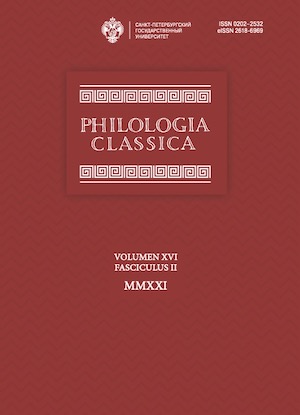The Origin of the Latin Fifth Declension
DOI:
https://doi.org/10.21638/spbu20.2021.208Аннотация
The goal of the article is to review Dariusz R. Piwowarczyk’s recent works (2016; 2017; 2017 [bis]; 2019) on the origin of the Latin fifth declension, as well as to demonstrate the correctness of the dual explanation (Witczak 2015) not discussed or even mentioned by Piwowarczyk. The author is convinced that Latin, like other Indo-European languages, once had a separate dual number which disappeared in the pre-literary period. The loss of the dual number disturbed the declension system existing at the time and caused the need for the creation of a new declension class (the fifth declension). The laryngeal phoneme *h1 formed the basic dual ending in the Indo-European languages. Proto-Indo-European animate nouns of consonant stems created a strong form in the dual number, demonstrating the ending *-eh1 (hence IE. *-ē and Latin *-ē-), whereas inanimate nouns had a weak form (PIE. *-ih1, hence Lat. -ī in vīgintī ‘twenty’ and the oblique stem *-iē-, attested in Lat. aciēs, māteriēs etc.). Proto-Latin dual forms ending in *-ē (< PIE. *-eh1) referring to animate nouns, as well as dual forms ending in *-ī (< PIE. *-ih1) referring to inanimate nouns, underwent the process of collectivization and singularization: most of them gained the status of typical singularia tantum and then formed a separate class of nouns which had -ē- as the common feature. It is finally suggested that a large group of originally dual nouns (especially the so- called dualia tantum) formed the Latin fifth declension.
Ключевые слова:
dual number, dualia tantum, etymology, fifth Latin declension, Indo-European languages, Latin morphology, singularia tantum
Скачивания
Библиографические ссылки
Загрузки
Опубликован
Как цитировать
Выпуск
Раздел
Лицензия
Статьи журнала «Philologia Classica» находятся в открытом доступе и распространяются в соответствии с условиями Лицензионного Договора с Санкт-Петербургским государственным университетом, который бесплатно предоставляет авторам неограниченное распространение и самостоятельное архивирование.






